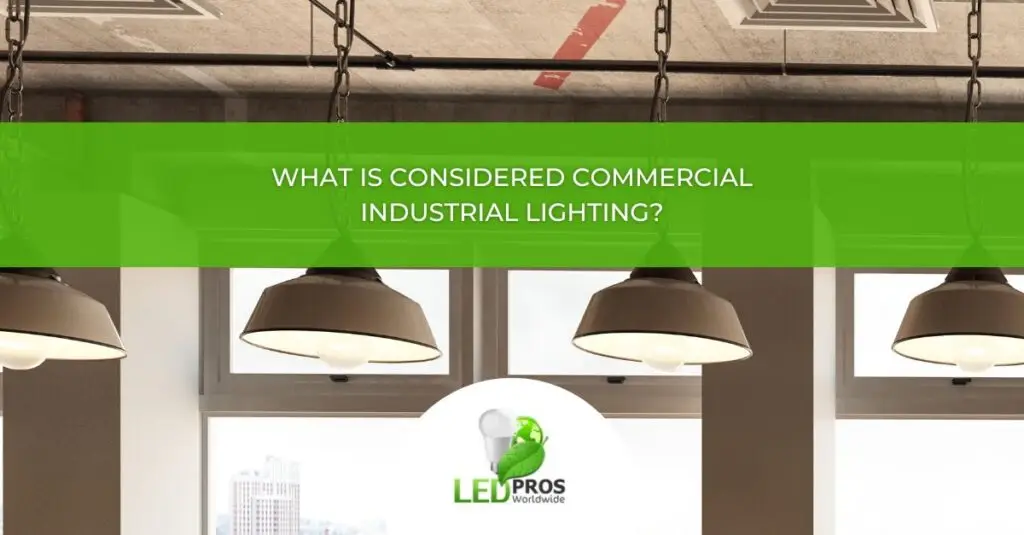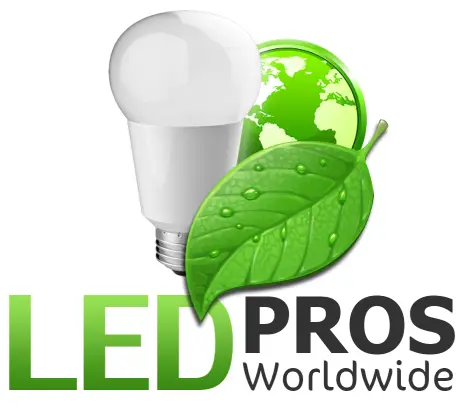When it comes to creating an efficient and safe industrial workspace, lighting plays a crucial role. The right industrial lighting can enhance productivity, reduce energy costs, and ensure compliance with safety regulations. However, with so many options available, it can be overwhelming to choose the best lighting solution for your facility. In this ultimate industrial lighting guide, we’ll shed light on the various types of industrial lighting and help you make an informed decision that caters to your specific needs. Read more about What is Considered Commercial Industrial Lighting? here.
Understanding the Different Types of Industrial Lighting
1. LED Lighting: Energy-Efficient and Long-Lasting
LED lighting has gained immense popularity in recent years, and for good reason. These energy-efficient lights offer bright, clear illumination while consuming significantly less power compared to traditional lighting options. Not only do LED lights help reduce your energy bills, but they also boast an impressive lifespan of up to 50,000 hours, making them a cost-effective choice in the long run.
2. Fluorescent Lighting: Bright and Budget-Friendly
Fluorescent lighting is another common choice for industrial settings. These lights provide bright, clear illumination and are relatively inexpensive to install and maintain. Fluorescent lights are also energy-efficient, making them a popular option for facilities looking to upgrade their lighting without breaking the bank.
3. Explosion-Proof Lighting: Safety in Hazardous Environments
In industries dealing with flammable or explosive materials, such as oil refineries or chemical plants, explosion-proof lighting is a must. These specialized lights are designed to prevent ignition of combustible substances in the event of a malfunction. Explosion-proof lights are constructed with durable, heat-resistant materials and often feature additional safety mechanisms like reinforced glass or emergency shut-off switches.
4. Full-Spectrum Lighting: Mimicking Natural Sunlight
Full-spectrum lighting has gained traction in recent years due to its potential health benefits and ability to create a more comfortable working environment. These lights mimic the natural spectrum of sunlight, which can help reduce eye strain, improve mood, and boost overall productivity. By providing a more natural lighting experience, full-spectrum lights can contribute to a more pleasant and efficient workspace.
5. Incandescent Lighting: Warm and Comfortable
While incandescent lighting may not be as energy-efficient as LED or fluorescent options, it still has its place in certain industrial settings. Incandescent lights emit a warm, comfortable glow that can be preferable in some manufacturing environments. They are also relatively inexpensive and easy to install, making them a viable choice for facilities working with a tight budget.
Factors to Consider When Choosing Industrial Lighting
When selecting the ideal industrial lighting for your facility, there are several key factors to keep in mind:
1. Energy Efficiency: Opt for lighting solutions that minimize energy consumption without compromising on illumination quality.
2. Durability: Industrial environments can be harsh, so choose lights that are built to withstand dust, debris, and other potential hazards.
3. Safety Features: Ensure that your chosen lighting complies with relevant safety regulations and includes necessary features like shatterproof glass or automatic shut-off mechanisms.
4. Placement: Consider the layout of your facility and the specific tasks performed in each area. High ceilings may require specialized high bay lighting, while areas with heavy debris may need lights that are easy to clean and maintain. Read more about Make The Right Industrial Lighting Choices here.
 |
Frequently Asked Questions
1. Q: How do I determine the right amount of lighting for my industrial facility?
A: The optimal lighting level depends on the specific tasks being performed and the size of your facility. Consult with a lighting specialist or refer to industry guidelines to determine the appropriate amount of lighting for your workspace.
2. Q: Can I mix different types of industrial lighting in the same facility?
A: Yes, you can use a combination of lighting types to cater to the specific needs of different areas within your facility. For example, you may use LED lighting in general work areas and explosion-proof lighting in hazardous zones.
3. Q: How often should I replace my industrial lights?
A: The replacement frequency depends on the type of lighting and its rated lifespan. LED lights typically last longer than fluorescent or incandescent options. Regular maintenance and monitoring can help you determine when it’s time to replace your lights.
How do I determine the right amount of lighting for my industrial facility?
Determining the optimal lighting level for your industrial facility is crucial for ensuring a safe, productive, and comfortable working environment. Insufficient lighting can lead to eye strain, reduced productivity, and potential safety hazards, while excessive lighting can result in glare, energy waste, and unnecessary costs. To strike the perfect balance, consider the following factors:
1. Industry Standards: Start by referring to industry-specific guidelines and regulations that outline recommended lighting levels for various tasks and environments. Organizations like the Illuminating Engineering Society (IES) provide detailed lighting guidelines for industrial settings based on factors such as task complexity, visual acuity requirements, and safety considerations.
2. Task-Specific Requirements: Evaluate the specific tasks performed in each area of your facility. Different activities require different levels of illumination. For example, intricate assembly work may demand higher lighting levels compared to general warehouse storage areas. Consider the level of detail, accuracy, and visual comfort required for each task to determine the appropriate lighting level.
3. Facility Layout and Dimensions: Take into account the physical characteristics of your industrial facility, including ceiling height, room size, and surface reflectance. High ceilings may require more powerful lighting fixtures to ensure adequate illumination reaches the work plane. Similarly, larger spaces may need a higher number of light fixtures to achieve uniform lighting distribution.
4. Lumen Output and Footcandles: Understand the key metrics used to measure lighting levels. Lumen output refers to the total amount of light emitted by a light source, while footcandles (fc) measure the amount of light falling on a surface. Use lumen output and footcandle recommendations from industry standards to calculate the number and type of light fixtures needed for each area of your facility.
5. Energy Efficiency and Maintenance: Consider the energy efficiency of your chosen lighting solution and factor in long-term maintenance costs. LED lighting, for example, offers high lumen output per watt and requires less frequent replacement compared to traditional lighting options. Opting for energy-efficient lighting not only reduces your energy bills but also contributes to a more sustainable and environmentally friendly facility.
6. Lighting Simulation and Design: Utilize lighting simulation software or consult with a professional lighting designer to create a comprehensive lighting plan for your industrial facility. These tools and experts can help you visualize the lighting distribution, identify potential glare or shadowing issues, and optimize the placement and selection of light fixtures to achieve the desired illumination levels.
7. Flexibility and Adaptability: Consider the potential future changes in your industrial facility’s layout or operations. Implement a lighting system that allows for flexibility and adaptability, such as adjustable light fixtures or smart lighting controls. This enables you to easily modify lighting levels and configurations as your facility’s needs evolve over time.
Remember, the right amount of lighting for your industrial facility is not a one-size-fits-all solution. It requires careful consideration of industry standards, task-specific requirements, facility dimensions, energy efficiency, and long-term adaptability. By taking a comprehensive approach and seeking guidance from industry experts, you can create an optimized lighting environment that enhances safety, productivity, and overall well-being in your industrial workspace.
Closing Thoughts
Choosing the right industrial lighting is crucial for creating a safe, efficient, and productive workspace. By understanding the different types of lighting available and considering factors like energy efficiency, durability, and safety features, you can make an informed decision that best suits your facility’s needs. Whether you opt for LED, fluorescent, explosion-proof, full-spectrum, or incandescent lighting, the right industrial lighting solution can help illuminate your path to success.
[gravityform id=”1″ title=”true” description=”true”]
